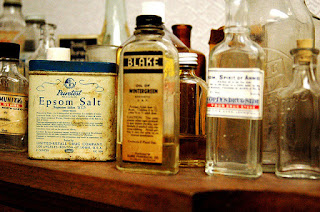Facts
1. 160 billion emails are sent daily, 97% of which are spam.
2. Spam generates 33bn KWt-hours of energy every year, enough to power 2.4 million homes, producing 17 million tons of CO2.
3. 9 out of every 1,000 computers are infected with spam.
4. Spammer get 1 response to every 12 million emails they send (yet it still makes them a small profit).
5. A twillionaire is a twitterer with a million or more followers.
6. There are some 1 billion computers in use.
7. There are some 2 billion TV sets in use.
8. There are more than 4 billion cell phones in use. About 3 million cell phones are sold every day.
9. The first known cell phone virus, Cabir.A, appeared in 2004.
10. Since 2008, video games have outsold movie DVDs.
11. Amazon sells more e-books than printed books.
12. Facebook has 500 million registered users… about 100 million less than QQ.
13. About 1.8 billion people connect to the Internet, 450 million of them speak English. See list of Internet languages.
14. Google indexed it’s 1 trillionth unique URL on July 25, 2008. That is thought to be about 20% of all the pages on the Internet but a high percentage of the World Wide Web (the public Internet).
15. One google search produces about 0.2g of CO2. But since you hardly get an answer from one search, a typical search session produces about the same amount of CO2 as does boiling a kettle.
16. Google handles about 1 billion search queries per day, releasing some 200 tons of CO2 per day.
17. The average US household uses 10.6 megawatt-hours (MWh) electricity per year.
Google uses an estimated 15 billion kWh of electricity per year, more than most countries. However, google generates a lot of their own power with their solar panels.
18. Surgeons who grew up playing video games make 37 percent fewer mistakes.
19. The technology contained in a single game boy unit in 2000 exceeds all the computing power that was used to put the first man on moon in 1969.
20. Windmills always turn anti-clockwise. Except for the windmills in Ireland.
21. Whale oil was used in automobile transmissions as late as 1973.
22. To have your picture taken by the very first camera you would have had to sit still for 8 hours.
23. Thomas Alva Edison patented almost 1,300 inventions in his lifetime.
24. The normal static electricity shock that zaps your finger when you touch a doorknob is usually between 10,000 and 30,000 volts.
25. The life boat was patented in 1845.
26. The first hard drive available for the Apple II had a capacity of only 5 megabytes.
27. The first alarm clock could only ring at 4 a.m.
28. The electric chair was invented by a dentist.
29. The cigarette lighter was invented before the match.
30. The average car produces a pound of pollution every 25 miles.
31. Originally, Nintendo was a playing card manufacturer.
32. Kleenex tissues were originally used as filters in gas masks.
33. Jumbo jets use 4,000 gallons of fuel to take off.
34. It takes six months to build a Rolls Royce...and 13 hours to build a Toyota.
35. In the early 1960's, Porsche commercially manufactured farm tractors.
36. First four countries to have television: England, the U.S., the U.S.S.R., and Brazil.
37. Castor oil is used as a lubricant in jet planes.
38. Car airbags kill 1 person for every 22 lives that they save.
39. A toaster uses almost half as much energy as a full-sized oven.
40. An airplane mechanic invented Slinky while he was playing with engine parts and realised the possible secondary use for the springs.
41. In 1998, Sony accidentally sold 700,000 camcorders that had the technology to see through people's clothes.
42. The United States produces enough plastic film annually to cover the entire state of Texas.
43. The first United States coast
to coast airplane flight occurred in 1911 and took 49 days.
A Boeing 747s wingspan is longer
than the Wright brother's first flight (120ft).
44. The Chinese were using
aluminum to make things as early as 300 AD Western civilization didn't
rediscover aluminum until 1827.
45. George Seldon received a
patent in 1895 - for the automobile. Four years later, George sold the rights
for $200,000.
46. The first coin operated
machine ever designed was a holy-water dispenser that required a five-drachma
piece to operate. It was the brainchild of the Greek scientist Hero in the
first century AD.
47. Compact discs read from the
inside to the outside edge, the reverse of how a record works.
48. The electric chair was
invented by a dentist, Alfred Southwick.
49. The first e-mail was sent
over the Internet in 1972.
50. The Chinese invented
eyeglasses. Marco Polo reported seeing many pairs worn by the Chinese as early
as 1275, 500 years before lens grinding became an art in the West.
51. If hot water is suddenly
poured into a glass that glass is more apt to break if it is thick than if it
is thin. This is why test tubes are made of thin glass.
52. Construction workers hard
hats were first invented and used in the building of the Hoover Dam in 1933.
53. The Hoover Dam was built to
last 2,000 years. The concrete in it will not even be fully cured for another
500 years.
54. Limelight was how we lit the
stage before electricity was invented. Basically, illumination was produced by
heating blocks of lime until they glowed.
55. As much as 80% of microwaves
from mobile phones are absorbed by your head.
56. Nuclear ships are basically
steamships and driven by steam turbines. The reactor just develops heat to boil
the water.
57. The amount of oil that is
used worldwide in one year is doubling every ten years. If that rate of
increase continues and if the world were nothing but oil, all the oil would be
used up in 400 years.
58. Radio waves travel so much
faster than sound waves that a broadcast voice can be heard sooner 18,000 km
away than in the back of the room in which it originated.
59. The rickshaw was invented by
the Reverend Jonathan Scobie, an American Baptist minister living in Yokohama,
Japan, built the first model in 1869 in order to transport his invalid wife.
Today it remains a common mode of transportation in the Orient.
60. A chip of silicon a quarter-inch
square has the capacity of the original 1949 ENIAC computer, which occupied a
city block.
70. The term skyscraper was first
used way back in 1888 to describe an 11-story building.
71. Sound travels 15 times faster
through steel than through the air.
72. There are more than 600
million telephone lines today, yet almost half the world's population has never
made a phone call.
73.Scottish inventor John Logie
Baird gave the first public demonstration of television in 1926 in Soho,
London. Ten years later there were only 100 TV sets in the world.
74. Traffic lights were used
before the advent of the motorcar. In 1868, a lantern with red and green
signals was used at a London intersection to control the flow of horse buggies
and pedestrians.
75. More than a billion
transistors are manufactured... every second.
76. The first VCR, made in 1956,
was the size of a piano.
77. The windmill originated in
Iran in AD 644. It was used to grind grain.
78. The World Trade Center towers
were designed to collapse in a pancake-like fashion, instead of simply falling
over on their sides. This design feature saved hundreds, perhaps thousands of
lives on Sept. 11, 2001, when they were destroyed by terrorists.
79. 54% of bloggers post content or tweet daily.
80. 80% of Twitter usage is on mobile devices
81. The fastest growing segment on Facebook is 55-56 year old women
82. Ashton Kutcher & Ellen Degenres have more followers on Twitter than the entire population of Ireland, Norway and Panama.
83. 70% of 18-34 year olds watch television on the web.
84. If Facebook were a country it would be the third largest in the World.
85.
Technology facts regarding the London Olympics 2012
91. Over four billion of us are expected to tune in to watch our favourite athletes perform on TV – over two thirds of the world's population.
92. The Technology Operations Centre unveiled this week is the technology ‘Mission Control’ for London 2012 – it oversees the results, IT security, power and telecommunications for all 94 Olympic venues.
93. The Technology Operations Centre will be staffed by 450 people working 24/7 under one roof to keep all 94 Olympic competition and non-competition venues running smoothly.
94. 200,000 hours - or 23.5 years’ - worth of testing will be carried out on the IT systems before the games start, to simulate and prepare for every possible scenario. To put that in perspective, that’s the equivalent of 8,333 days’ work.
95. For the first time ever, commentators will have touch-screen Commentator Information System technology for every single Olympic Games sports - delivering real-time results high speed. Ten more sports have been added to the system compared to Beijing 2008. London 2012 will also be the first Summer Paralympic Games to use this Commentator Information System, with five sports added to the system.
96. If the British summer is playing up, we could take a tip from the Chinese – who shot weather rockets into the sky to stop rain clouds soaking the audience and spoiling the party at the Opening Ceremony!
97. London 2012 will be a greener, more sustainable Olympic Games. A special plant will supply electricity, heat and chilled water to the London 2012 Olympic Park using technology which produces 33 per cent lower CO2 emissions than from the electricity grid.
98. The Technology Operations Centre at London 2012 will also be able to process 30 per cent more results data than Beijing 2008 to meet the rapidly increasing demands of fans for information anytime and everywhere.
99. You can leave the cash at home! London 2012 offers people the chance to attend without cash but still pay, by using ‘contactless’ cards which will be swiped over a reader like an Oyster card to make payments. More than 5,000 retailers so far have signed up.
100. With 8.5 billion PCs, smart phones and tablets predicted to be connected to the internet by 2012, the London games are set to be the biggest ever online.


























































































































